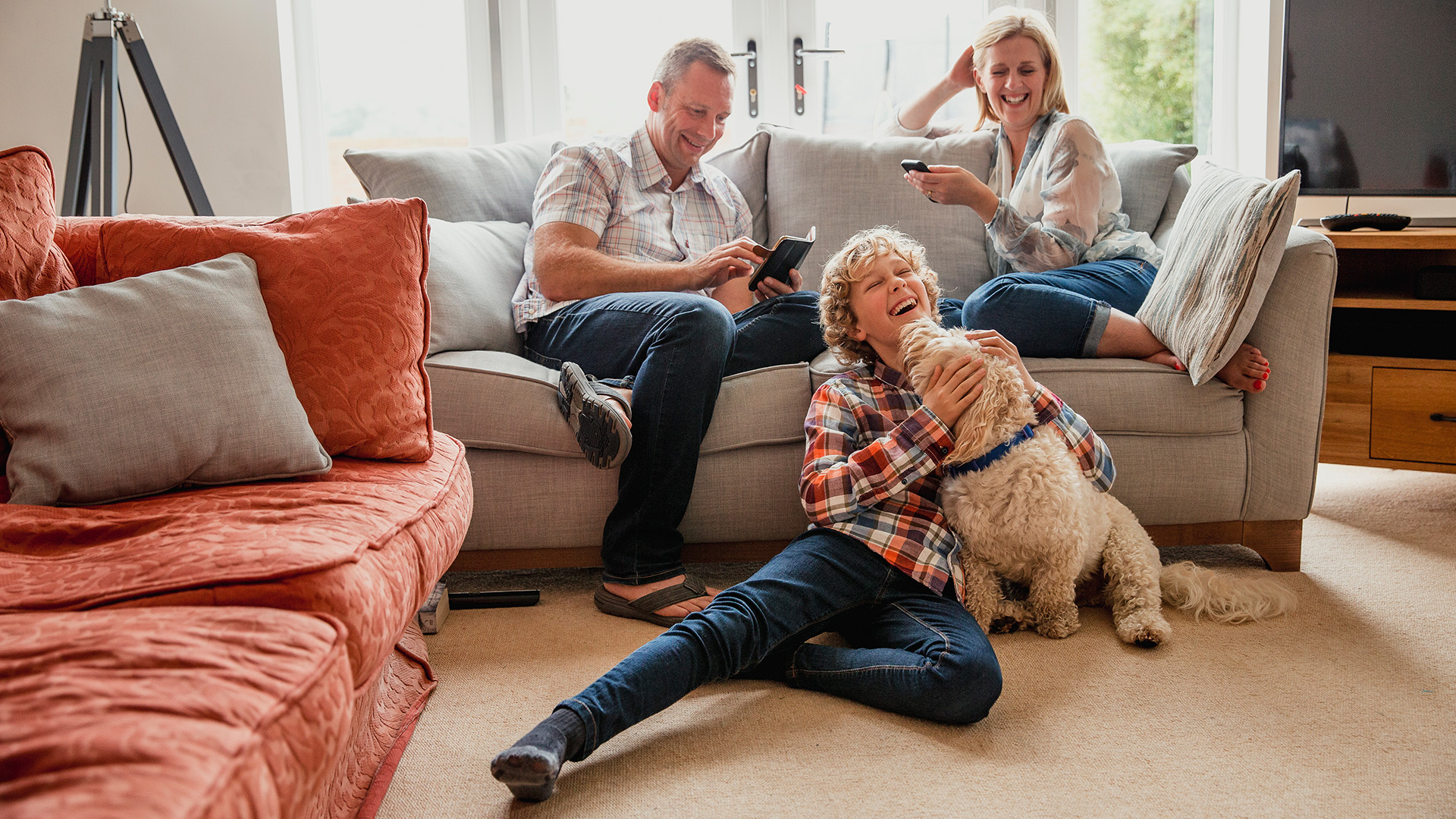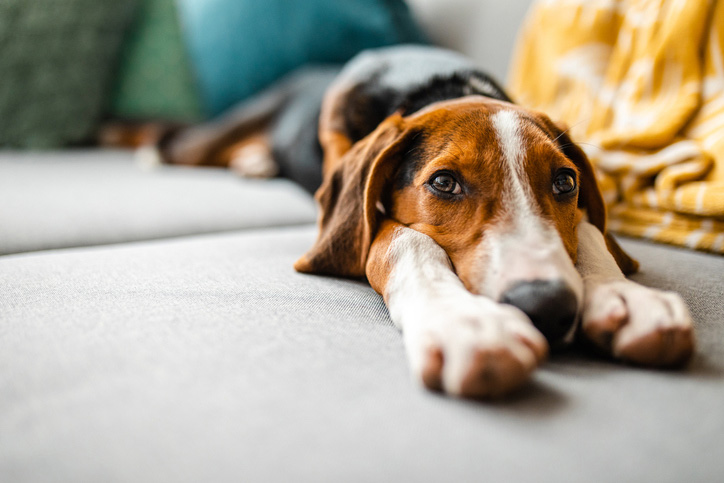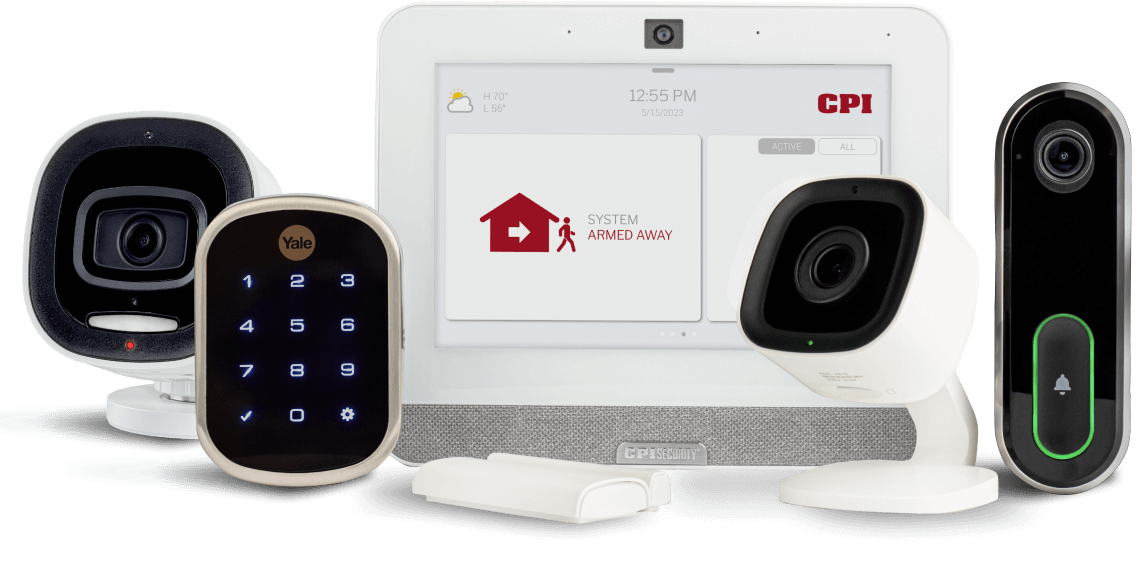As much as we wish we could take our pets with us wherever we go, there will be times when our pets have to stay home alone.
Whether leaving for a week-long trip, a weekend retreat, or just a typical workday, we’ve outlined a few tips for how to safely leave your pets at home (and even check on them throughout the day)!
Quick Author’s note: While we love all pets as much as the next person, reach out to your veterinarian if you ever have specific questions about leaving your pet home alone. They’re the experts!
Tips for Leaving Your Pet Home Alone
Keep an Eye on Them While You’re Away
Who doesn’t love taking a break and looking at pictures or videos of their furry friend throughout the day? Why not take it a step further with a live video feed?
Luckily, there are a few solutions on the market that can help you keep an eye on your furry friends. CPI’s 180 Camera is a great option if you want to see and speak to your pet. Now you can easily say hi while at work directly from your app!
But what if you want real-time updates when you’re not in an app? Set alerts for both your CPI 180 Camera and Indoor Camera with IVAN (Intelligent Video Activity Notifications). IVAN is a fully customizable feature with CPI cameras that lets you set zones throughout your house and allow you to monitor for certain behavior. For example, you can set a zone and get an alert every time they jump on the couch.
Hire a Dogwalker or Pet Sitter
Depending on how long you’ll be away from home, it may be a good idea to hire a dog walker or someone who can check on your pet throughout the day.
If you decide to go this route, don’t worry about copying a key – CPI’s Smart Lock allows you to create unique codes for users, so you know who’s unlocking your door and when. When paired with the CPI Video Doorbell Pro, you can even see and greet your dogwalker through the two-way talk functionality.
Increase Their Safety (and Your Peace of Mind)
One of the hardest parts of leaving your pets home alone is knowing that you’re not there to help them if there’s an emergency. If you have life safety alarms like CPI’s Fire Communicator and Carbon Monoxide Detector, feel confident knowing that your home and pet are protected with Real Time ResponseSM. Should a fire or carbon monoxide alarm go off, CPI’s 24/7 monitoring team takes action to verify the emergency. If needed, they’ll contact local authorities and relay vital information in real-time, saving precious seconds when it matters most.
Leave Things That Will Keep Them Occupied
Animals, like humans, can get bored. And sometimes this can lead to them getting into things they shouldn’t. Consider putting out their favorite toys or investing in a food or treat bowl that dispenses food throughout the day.
Ensure They’re in a Familiar Setting
When it comes to feeling relaxed, your pets like their creature comforts, too!
If your pet has favorite toys or blankets, or they’re particularly fond of an article of clothing that smells like you, consider leaving it out or putting it in their crate. Having familiar things around could help them feel more at ease in your absence.
Burn Energy Before You Leave
Have you ever wondered what dogs do all day? They sleep! And the best way to encourage them to take a long nap is to take them on a walk before you leave. This will give them a chance to use the bathroom and get some fresh air while tuckering them out a bit.
How Long Can Your Pets Be Home Alone Safely?
How Long Can You Leave a Puppy Alone?
If possible, puppies shouldn’t be left alone for more than about two hours at a time since they’re still learning, can develop separation anxiety, and need to use the restroom frequently. As they get a bit older, this time can expand by additional hours.*
Tips for Leaving a Puppy Alone at Home for the First Time
It can be hard to know when it’s okay to leave a puppy alone at home for the first time. Each puppy is different, developing at its own pace, with its own temperament. Test the waters by first practicing while you’re at home. Leave them in their crate or pen while you’re in another room, and see how they do.
You can then ease into leaving them home alone for short spurts of time so they can acclimate to being alone early in life. To make them more comfortable, be sure to keep them in a secure, familiar environment.
CPI Safety Tip: Puppies need a lot more care and attention than adult dogs, which means you don’t want to leave them alone for too long. They may also need more training and walks to ensure that they always use the bathroom outside.
How Long Can You Leave a Dog Home Alone?
It’s recommended that adult dogs one year or older be left alone no more than 6 hours (though you can go up to 8 in a pinch).*
In general, adult dogs are more used to being left alone than puppies. Still, it’s good to not leave them alone for more than six hours – you don’t want to find out the hard way how long a dog can go without a bathroom break!
CPI Safety Tip: In some cases, it may be best to leave a dog in a crate while at work, but this depends on the situation, and it’s best to consult a veterinarian before putting any dog in a crate.
What About My Elderly Dog?
Generally, they can still be left alone for six hours, but this time limit may decrease if they have issues with their bladder or other health problems.
CPI Safety Tip: For elderly dogs, the length of time they can stay home safely depends on their age and any health issues. In addition to their ability to hold their bladder, medications and feeding frequency can impact the length of time they can be left alone.
How Long Can Cats be Left Alone?
Adult cats can be left alone for eight to twelve hours while you’re away.
Overall, cats are easier to leave alone for longer periods of time compared to dogs. But that doesn’t mean it’s easy for all cats; they can still get bored or lonely during your time away. Though they might not always show it, cats are social creatures who form strong bonds with their human companions, and they need company and love. Without it, they can grow distressed or lonely.
CPI Safety Tip: For periods longer than twelve hours, it’s important to have someone check in on your cat. They can refresh the water and food, empty the litter box, and make sure the cat is okay.
What About My New Kitten?
Kittens should only be left alone for three to eight hours, depending on their age.
Just like with puppies, the timing of how long a cat should be left alone depends a lot on their age. Kittens younger than three months should only be left alone for a couple of hours. Kittens that are six months old can stay home alone for up to eight hours.
CPI Safety Tip: Kittens are curious creatures and can get into all sorts of mischief, like tearing up the curtains or eating something they shouldn’t. So, it might be best to keep the kitten in one room at first.
Ultimately, if you plan to be away for an extended period, your best bet is to consider boarding, leaving your animals with a friend or family member, or hiring a pet sitter.
How to Pet-Proof Your House When You’re Away: A Comprehensive Guide
Before you leave your pet home alone for an extended period, take the time to pet-proof your home. Being proactive in creating a safe-space for your pets can help keep them happy and healthy while you’re away. Here’s what to do:
Secure the Kitchen and Bathroom
These rooms contain numerous hazards for pets. Ensure trash cans have secure lids to prevent pets from rummaging and possibly ingesting harmful substances. Store cleaning supplies, medications, and food items out of reach or in locked cabinets.
Watch Out for Small Objects
Small objects like toys, coins, and jewelry can pose choking hazards for your pets. Before you leave, quickly sweep your home to ensure there’s nothing small for your pet to eat. Be sure to check under furniture and corners for items that may have been overlooked (especially if you have smaller kittens or puppies).
Protect Electrical Cords
Pets, particularly puppies and kittens, may find electrical cords intriguing and potentially chew on them, risking electric shock. Consider using cord covers or deterrent sprays, or keep cords out of reach.
Safeguard Windows and Balconies
Cats love perching on window sills, and dogs may get excited seeing something outside. To prevent accidents, install sturdy screens on windows and keep balconies blocked or well-secured while you’re away.
Remove Toxic Plants
Many common houseplants are toxic to pets if ingested. Research each plant in your home to ensure it’s pet-safe. If not, consider replacing it or moving it to an area your pet can’t reach.
Secure Loose Wires and Cords
Loose wires from blinds or curtains can pose a strangulation risk. Keep these cords out of reach, or secure them with cord cleats.
Regularly Check Your Pet-Proofing Measures
Pet-proofing isn’t a one-time task. You should put a routine in place that you run through anytime you’re leaving your pet home alone. As your pet grows and their behavior changes, you may need to adjust your pet-proofing measures.
While pet-proofing requires time and effort, the peace of mind knowing your pet is safe while you’re away makes it worthwhile. Following these guidelines can create a safer environment for your pet to live happily and healthily.
Keep an Eye on Your Furry Friend: The Benefits of Indoor Security Cameras for Pet Owners
As pet owners, we all know that leaving our beloved animals at home can be a source of anxiety. Are they safe? Are they behaving? Are they missing us as much as we’re missing them? If only there was a tool that we can use to keep eyes on our pets while we’re away.
Indoor security cameras are an excellent tool for pet owners. With features like live streaming, two-way audio, and motion detection, these devices offer peace of mind when you’re away from home. Every pet owner should consider investing in an indoor security camera. Purchase yours today through CPI.
Sources:
*Rover, “How Long Can You Leave A Dog Alone?”
**I and Love and You, “A Pet Owners Guide to How Long Can Your Cat Be Left Home Alone”





